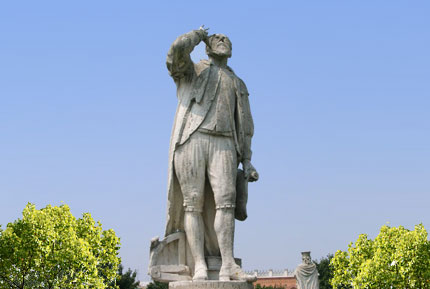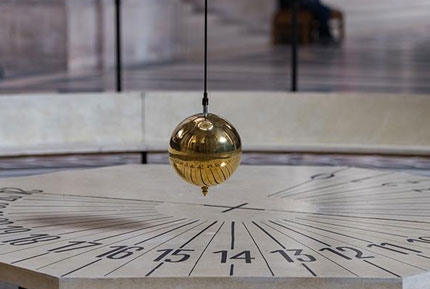Discovering the hidden science in Padua’s landmarks
This month, I will take you to discover Galileo and his science in the town of Padua, which is just a few kilometers from Abano Terme and can be reached in about twenty minutes by bus, train or car.
Padua is a town renowned for having hosted famous scientists not to mention the second oldest university in Italy, founded in 1222, the first botanical garden in the world opened in 1545, a very important fourteenth-century fresco and even still another great record: it was the town that welcomed the scientist, mathematician, architect, astronomer and physicist Galileo Galilei for 18 long and fruitful years.
Did you know that the Pisan scientist defined the Paduan years as the “best” in his life?
Galileo was born in Pisa in 1564, the year when Michelangelo died and William Shakespeare was born. Like many other Tuscan artists, he left the Grand Duchy after his medical studies left him feeling unrewarded and he went on to study mathematics, eventually finding his ideal environment in the sixteenth-century Padua where he could develop his brilliant intuitions.
Galileo also wanted to “settle down” economically and so he accepted the office of a professor of mathematics at the University of Padua and took advantage of the lively cultural and scientific environment and successfully dedicated himself to research and experiments.
Con Galileo, nasce a Padova il metodo scientifico moderno, quello empirico, basato sull’osservazione dal vero.
Alle sue lezioni, che per la forte affluenza di pubblico si svolgono in aula magna al Bo, l’edificio antico dell’università, accorrono studenti da ogni donde e leggendaria rimane la sua cattedra, costruita in legno dai suoi studenti per poterlo ascoltare e vedere meglio. Ma il grande genio è sempre in bolletta, per cui trasforma persino la sua casa padovana accanto alla Basilica di S. Antonio in una sorta di convitto ove accoglie e istruisce studenti.
With Galileo, the modern scientific and empirical method based on the observation of real life was born precisely in Padua.
Due to his popularity, his lessons were held in the Aula Magna in the Bo Palace, the ancient building of the university, and students came from all over the world to listen to him. His desk is a legendary object; it was built in wood by his own students who wanted to hear and see him better. Despite his success, the great genius was always broke and so he even turned his home, close to the St. Anthony’s Basilica, into a sort of boarding school where he welcomed and taught students.
The Paduan period awarded him with an important discovery: the design and realization of an astronomical telescope that magnified the view 30 times. In August 1609, Galileo showed the telescope for the first time to the Venetian Doge who could admire the magnified surrounding view from the bell tower in Piazza San Marco.
The Paduan period didn’t only mean work and dedication for Galileo but it was also a period when he enjoyed good cuisine and entertainment such as the theater. Padua was a safe shelter for Galileo whose final years were marked by the constant fights with the Vatican.
















